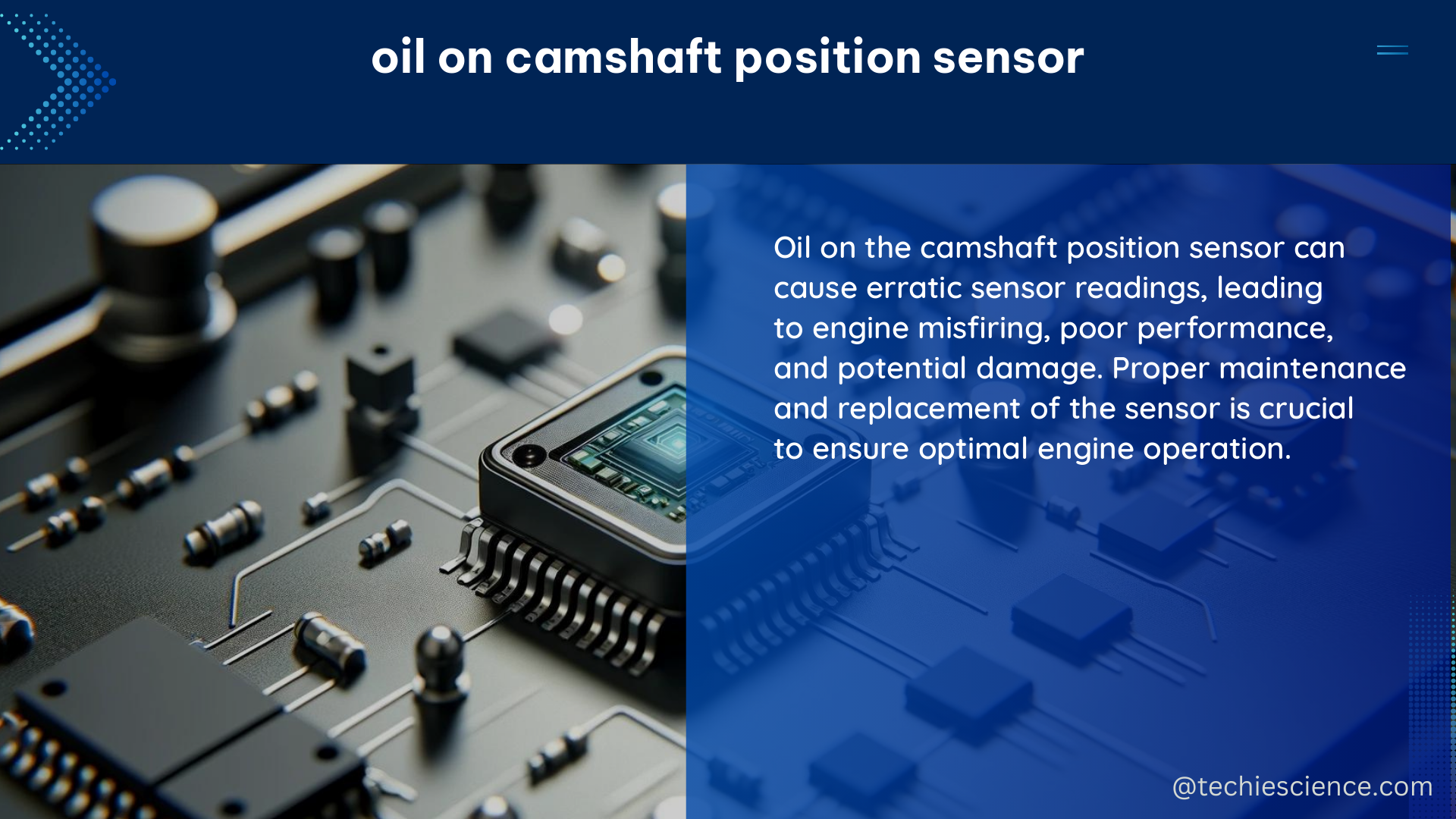The camshaft position sensor is a critical component in modern engines, responsible for providing the engine control unit (ECU) with precise information about the position of the camshaft. This data is essential for controlling ignition timing, fuel injection, and other vital engine functions. When the camshaft position sensor malfunctions, it can lead to a range of issues, including engine misfires, poor performance, and reduced fuel efficiency. Understanding the technical details and diagnostic procedures related to oil contamination on the camshaft position sensor is crucial for DIY mechanics looking to maintain and troubleshoot their vehicles effectively.
Understanding the Camshaft Position Sensor
The camshaft position sensor is typically located near the camshaft, either on the cylinder head or the engine block. It may be mounted directly on the camshaft or on a nearby bracket. The sensor operates by detecting the position of the camshaft and converting this information into an electrical signal that is transmitted to the ECU.
Sensor Specifications
-
Resistance: The camshaft position sensor typically has a resistance range of 500 to 2,000 ohms, although this can vary depending on the specific make and model of the vehicle. A multimeter can be used to measure the resistance of the sensor, which should be within the specified range for the sensor to function properly.
-
Voltage: The camshaft position sensor typically operates on a voltage range of 4.5 to 5.5 volts. The ECU provides a reference voltage to the sensor, which varies depending on the position of the camshaft. The sensor then modulates the voltage signal, which is transmitted back to the ECU.
-
Frequency: The camshaft position sensor typically operates at a frequency of several kilohertz, depending on the engine speed and other factors. The frequency of the signal can be measured using an oscilloscope or other diagnostic tool.
-
Signal Waveform: The waveform of the signal transmitted by the camshaft position sensor can provide valuable information about the sensor’s operation. A typical waveform consists of a series of pulses, with the frequency and amplitude of the pulses varying depending on the position of the camshaft.
Sensor Location and Replacement Cost
The camshaft position sensor is typically located near the camshaft, either on the cylinder head or the engine block. The sensor may be mounted directly on the camshaft or on a nearby bracket.
The cost of replacing a camshaft position sensor can vary widely depending on the make and model of the vehicle. On average, the cost of a replacement sensor can range from $50 to $200, plus labor costs for installation.
Oil Contamination and the Camshaft Position Sensor

One common issue that can affect the camshaft position sensor is oil contamination. If oil leaks onto the sensor or its wiring, it can cause a range of electrical issues, including open circuits or other malfunctions. This can result in fault codes or other symptoms that indicate a problem with the sensor.
Diagnosing Oil Contamination
When diagnosing a potential issue with the camshaft position sensor, it’s important to inspect the sensor and its surrounding area for any signs of oil contamination. This can include:
-
Visual Inspection: Look for any visible signs of oil leaks or residue on the sensor, its wiring, or the surrounding components.
-
Resistance Measurement: Use a multimeter to measure the resistance of the camshaft position sensor. If the resistance is outside the specified range, it may indicate an issue with the sensor, potentially caused by oil contamination.
-
Voltage and Frequency Checks: Measure the voltage and frequency of the signal being transmitted by the camshaft position sensor. Abnormal readings may suggest a problem with the sensor, which could be related to oil contamination.
-
Waveform Analysis: Examine the waveform of the signal being transmitted by the camshaft position sensor using an oscilloscope. Distortions or irregularities in the waveform may indicate an issue with the sensor, potentially caused by oil contamination.
Cleaning and Replacing the Sensor
If oil contamination is identified as the root cause of the issue, the next step is to clean or replace the camshaft position sensor and its associated components. This may involve:
-
Sensor Cleaning: Carefully clean the sensor and its surrounding area using a suitable solvent or degreaser, taking care not to damage any electrical connections or components.
-
Wiring Inspection: Inspect the sensor’s wiring for any signs of damage or corrosion caused by the oil contamination. Replace any damaged wiring as necessary.
-
Sensor Replacement: If the sensor cannot be effectively cleaned or the issue persists, the sensor may need to be replaced. Ensure that the replacement sensor is compatible with the specific make and model of the vehicle.
-
Leak Repair: Identify and address the source of the oil leak to prevent future contamination of the camshaft position sensor.
Conclusion
Oil contamination of the camshaft position sensor can be a significant issue, leading to a range of engine performance problems and diagnostic challenges. By understanding the technical details and diagnostic procedures related to this component, DIY mechanics can effectively identify, troubleshoot, and resolve issues caused by oil contamination, ensuring their vehicles continue to operate at peak performance.
References:
- Chilton Total Car Care Repair Manuals
- Automotive Service Excellence (ASE) Certification Tests
- Online forums and technical resources
- Camshaft Position Sensor Troubleshooting Guide
- Camshaft Position Sensor Replacement Cost

The lambdageeks.com Core SME Team is a group of experienced subject matter experts from diverse scientific and technical fields including Physics, Chemistry, Technology,Electronics & Electrical Engineering, Automotive, Mechanical Engineering. Our team collaborates to create high-quality, well-researched articles on a wide range of science and technology topics for the lambdageeks.com website.
All Our Senior SME are having more than 7 Years of experience in the respective fields . They are either Working Industry Professionals or assocaited With different Universities. Refer Our Authors Page to get to know About our Core SMEs.